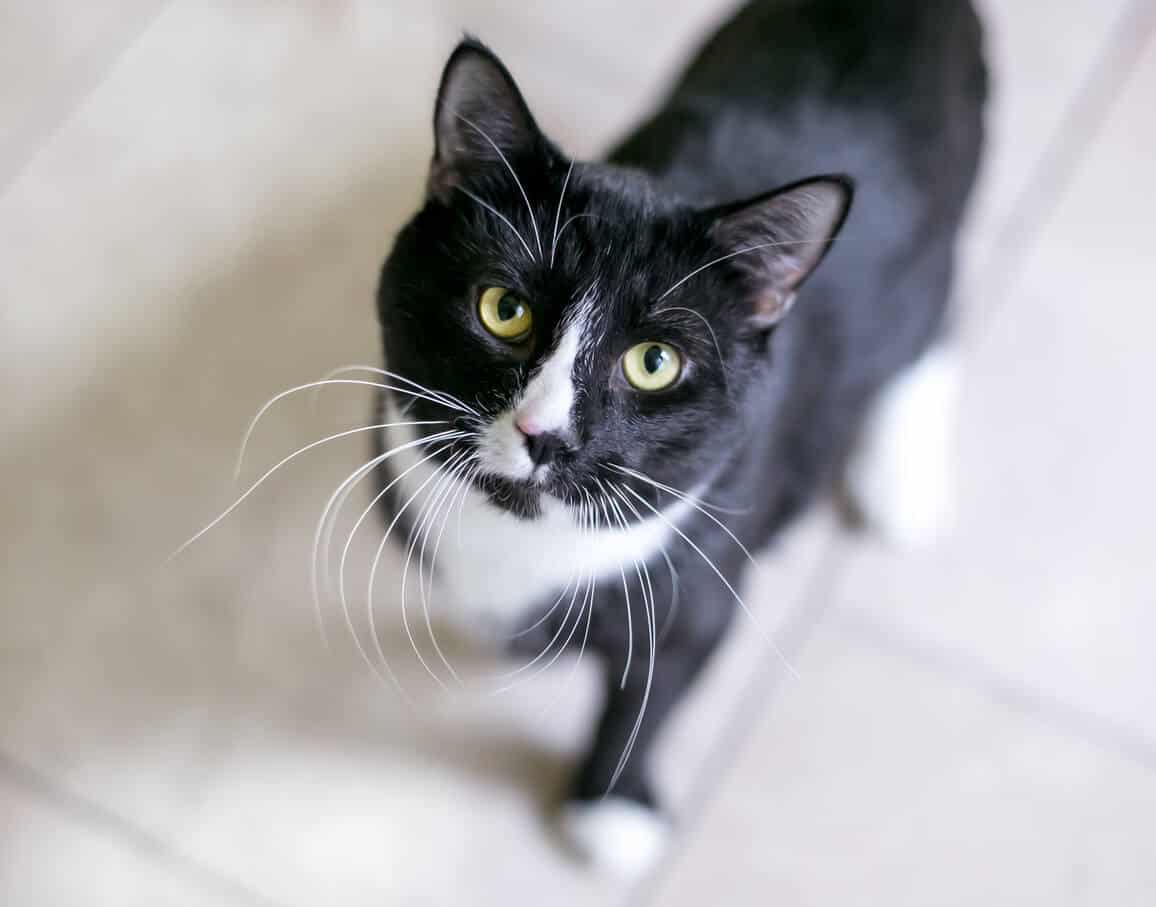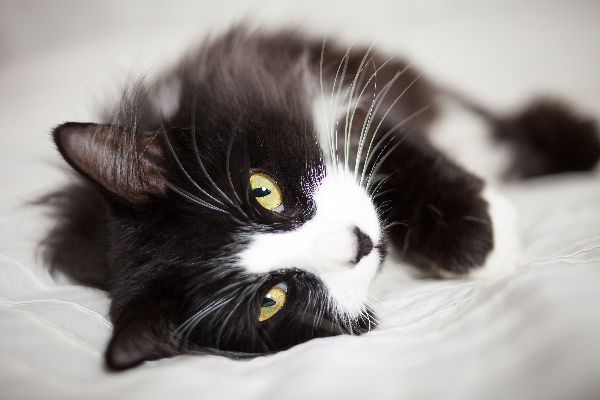Whether at a civilized dinner at the bowl or inaction with fellow cats: Tuxedo cats always appear impeccably “dressed”. The white markings on the otherwise shiny black coat literally make the representatives of this color type appear as if they are wearing an elegant “tuxedo”. Contrary to popular belief, the Tuxedo cat is not an independent breed, but a special coat pattern that occurs among various pedigree cats. Find out more about the purring “suit wearers”!
What does the term “tuxedo cat” mean?
Originally, “tuxedo” was a place name – more specifically, the name of a country residence for New York gentlemen who introduced a new (then scandalously casual) fashion style there in the 1880s. “Tuxedo” subsequently became synonymous in US parlance with an elegant black jacket that is traditionally worn with a white shirt and black pants. The British refer to the same garment as a “smoking jacket”. The “tuxedo” is a word from the world of fine men’s fashion, which is less common in this country than the term “tuxedo”.
In the context of cats, the term “tuxedo” only recently came to German-speaking countries – the cat lover scene is also becoming increasingly international. Today, however, the old expression “Felix cat” is hardly used for black cats with bibs and “boots”: modern cat owners now associate it more with the mascot of a well-known food manufacturer – which in turn represents a tuxedo cat.

In contrast to other colors such as the “lucky cat”, tuxedos are not particularly rare – but due to their “elegant” look, they have a striking appearance. The extreme black and white contrast of their fur catches the eye and inspires many friends of the velvet paws – and not only since yesterday. Illustrious personalities such as Sir Isaac Newton, William Shakespeare, and Ludwig van Beethoven are said to have been fans of tuxedo cats.
The colors of the tuxedo cat
Not every black and white cat is automatically a tuxedo cat. There are also other coat markings among bicolor kitties, for example, pintos. The positions of the black and white parts on the body and their weighting are decisive.
The fur of tuxedo cats is basically black for the most part and all of it. It is combined with white markings on the throat, chest, belly, (ideally all) paws, and partly on the chin. Some specimens also have white snouts and bridges of the nose. Tuxedos, which have a black spot inside the bib, are the crowning glory of the gentleman in a tuxedo look: Such rare animals with a bow tie are called “black ties”.
White areas on the rest of the body – such as the tail, ears, or back – are by definition not permitted in a “real” tuxedo cat. The rule of thumb: if you look down at the cat from above, you shouldn’t see any white hair. However, the proportion of white fur in a tuxedo cat can actually be very small. The white coloring does not have to be the same on all the above-mentioned parts of the body.
The typical tuxedo pattern can generally also appear in cats of other basic colors, but only cats that are otherwise pitch-black become real “tuxedo wearers”. Even “diluted” black in the form of blue does not count.
Tuxedo cats’ eyes are usually yellow or green, but isolated specimens have been known to have blue eyes. These then belong to the (rare) American cat breed “Ojos Azures”, whose prominent feature is the striking blue eyes.
How does the tuxedo fur pattern come about?
The genetic mechanisms behind the color inheritance in cats are a very exciting but also complex subject, which can only be presented in an abbreviated and simplified way here.
The color of a cat is encoded in a specific sequence of the genome on the X chromosome, genetic information for “black” is inherited dominantly. This coat color comes about later through the formation of the pigment “eumelanin”. If the genome of the sire and dam come together and the color information for black prevails, the offspring is always born monochrome black at first. The first initial condition for the “fur tuxedo” is thus fulfilled.

White, on the other hand, does not represent a color genetically, but rather its absence. The white patches on a tuxedo cat’s body are caused by some kind of defect or rather a lack of cells that are responsible for producing the color pigment. These cells spread throughout the kitten’s body during embryonic development, starting from the backbone. If there are too few of these cells or if they “migrate” too slowly, they can no longer reach the parts of the body that are turned away from the back, such as the stomach and paws. You can think of it as a cake frosting that was a bit too small. The resulting “flow pattern” is individual: there are no two tuxedos with a completely identical pattern.
In the case of tuxedo cats, to put it bluntly, the color was exactly enough to enable the “suit markings”. If more pigments are missing, the proportion of white becomes larger and more irregular: This results in piebald markings.
Unlike calico cats or red tiger cats, the sex of the animal in the tuxedo is not related to the coloring.